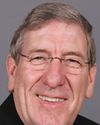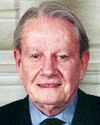Madam Speaker, this just goes to show that there is a complexity of problems. In fact there are very many people in this chamber who have names that are not gender specific.
Like my colleague opposite, who receives many letters addressed to “Mrs. Bergeron”, I have received many letters addressed to “Mr. Torsney”. My name is not very common in Canada. My family alone bears this name, because my parents immigrated to Canada.
I am pleased to speak to Bill C-405 which has been sponsored by the member for Verdun—Saint-Henri. On a personal basis I support everything that we can do to enhance people's participation rate in the election process, to help people to overcome physical difficulties and literacy difficulties. The objective of this amendment is to improve access for persons specifically with reading deficiencies.
The issue of accessibility is a fundamental principle to all of us in our electoral system. The questions that are raised here are quite important.
The Canada Elections Act has in fact been modified on many occasions in the last number of years. Polling stations on election day, the offices of the returning officers and the advance polling stations have a mandate to be available on a level access. While Elections Canada does not have it perfect, it does have 97% of its locations with level access for electors with disabilities.
In 1993 Bill C-114 extended the use of voting by special ballots to all electors, allowing electors with physical impairments to vote by mail. Elections Canada has taken steps to assist voters who have difficulty understanding English or French. Material about the electoral process was published in as many as 24 languages in the last general election. Returning officers are encouraged to appoint multilingual elections officials to provide information in several languages, particularly in urban areas and polls where there are people of many ethnic origins.
Other measures and new technologies have been put in place for the particular needs of hospitalized people, for voters with visual and hearing impairments, mobile polls, ballots in Braille, interpreters of sign language at polling stations, a special phone line for voters with hearing impairment. Voters who have reading deficiencies are included in the voters who have special needs. We need to find a way to help them.
The addition of photographs has been proposed by the hon. member for Verdun—Saint-Henri. This issue as well as that of placing party logos on the ballot have been the subject of study over the past few years.
In 1991 the Royal Commission on Electoral Reform and Party Financing recommended that logos or initials of the political parties be printed on the ballots and that photographs of candidates be displayed in the form of a poster at polling stations. Who knows how that would have affected all of our chances.
Following the 1993 general election the Chief Electoral Officer, a fine individual, recommended in the annex to his statutory report tabled in parliament in 1996 that the logos of registered parties be printed in black on the left side of the ballot in front of the candidates' names.
In the June 1998 report on the Canada Elections Act, the Standing Committee on Procedure and House Affairs expressed a number of reservations with this recommendation. Some members doubted that using logos would increase the participation of illiterate voters. Others echoed the Chief Electoral Officer's concerns about the technical difficulties involved in getting the logos or candidates' photographs on the ballot, including whether or not the photos should be in black and white or in colour. The committee of this House did not arrive at a consensus.
Many factors must be taken into consideration in assessing the proposal before us. There is an absence of empirical studies. Whether or not the voter rate for individuals who have reading deficiencies is lower than the participation of Canadians in general we do not know. Whether or not individuals with reading deficiencies who do not vote would vote if pictures were on the ballot is not clear.
It is difficult to evaluate, as many members of the House have articulated, without further research on the influence of voter selection of candidates as a result of having the pictures. Would it have a distorting effect? Would we be here or not be here? It is unclear. It may well be an unforeseen consequence that it could affect people's voting habits whether it be based on some kind of difficulty with people of various parties.
I know some people imagine it impossible, but I had great big mall posters. I had pictures in the paper. I had lots of pictures on materials and still people told me that their relative, friend or acquaintance had voted for me specifically because I was a Liberal and because I was not a woman. Who knows? I can assure everyone who is watching that I am female.
The candidates' photographs on the ballot may address the situation of people who wish to cast their ballot for a recognizable candidate regardless of the party affiliation. However, it would not address the case of electors who intend to vote primarily for a party.
There are a number of questions that have not been answered. What would be the cost of the proposal? What would be its impact on the electoral calendar? Are there technical dimensions associated with its implementation?
Let us be clear. The printing of ballots can take place only after the closing date for nominations, day 21. The opening of advance polling stations starts 10 days after the closing of nominations, days 10, 9 and 7. Therefore all the ballots need to be produced and distributed even in remote areas of the country within a period of 10 days. It would be a serious strain on the already very short timeframe.
The production process would be further complicated by the addition of photographs, besides the fact that the ballot may need to be changed.
There would need to be established rules, as the hon. member opposite has indicated, on the quality of the impression, the format, the size and the placement of the pictures. Elections Canada would need to be provided with the responsibility to make sure that the rules are enforced, otherwise all of us could be in jeopardy for fairness.
Elections Canada has not had a chance to answer these questions. We already know that the 36 day period of the electoral campaign leaves little room for additional steps in the process.
We do not have that many parameters in Bill C-405. We need to look through these issues and we need to look at what the other options are.
In the Northwest Territories for instance currently posters are provided with photographs of candidates in all voter locations. At first glance this could be the way to solve the problems of the hon. member opposite.
No proposal should be excluded or adopted before the organizations representing the people who have reading deficiencies are consulted. They can best identify the solutions. We need to have a bottom-up solution. More analysis needs to be done.
On the issue of accessibility, all of us in the House support that. On the issue of encouraging more people of varied backgrounds to participate, hopefully all of us support that and work every day to reduce those barriers, but further analysis is needed.
I would remind all hon. members that the government House leader will be introducing legislation to amend the Canada Elections Act in the very near future. Perhaps this matter could be pursued at that time by the hon. member opposite and by all members of the House.









